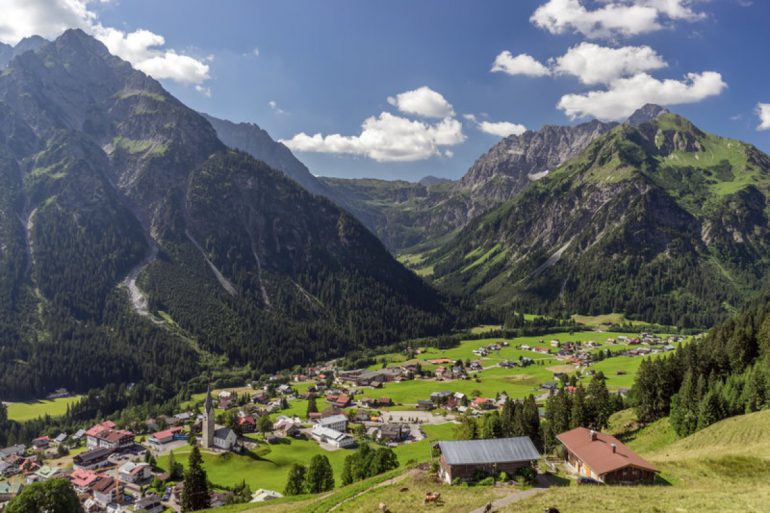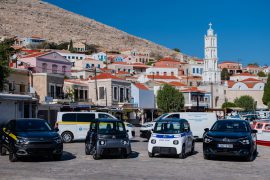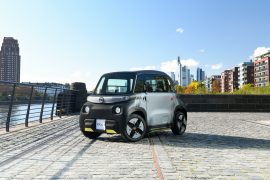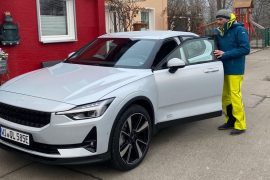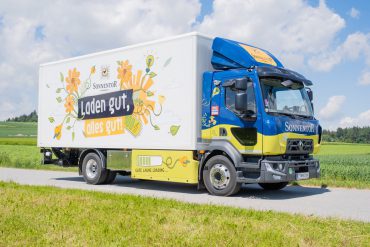This time, the destination of our e-mobile voyage of discovery to sustainable places and special people is a vacation destination in the Austrian state of Vorarlberg, the Kleinwalsertal enclave. It is surrounded by the “sea of peaks” of the Allgäu Alps at an altitude of up to 1250 meters and can only be reached by car via German territory, namely via Oberstdorf in the Allgäu.
The region was settled around 1270 by Walsers, an ethnic group that migrated from the Swiss Valais. Their special dialect, which is still spoken today, is clearly different from their neighbours in Vorarlberg and the Allgäu. The approximately 5,000 inhabitants in Kleinwalsertal are distributed among the four villages of Riezlern, Hirschegg, Mittelberg and Baad.
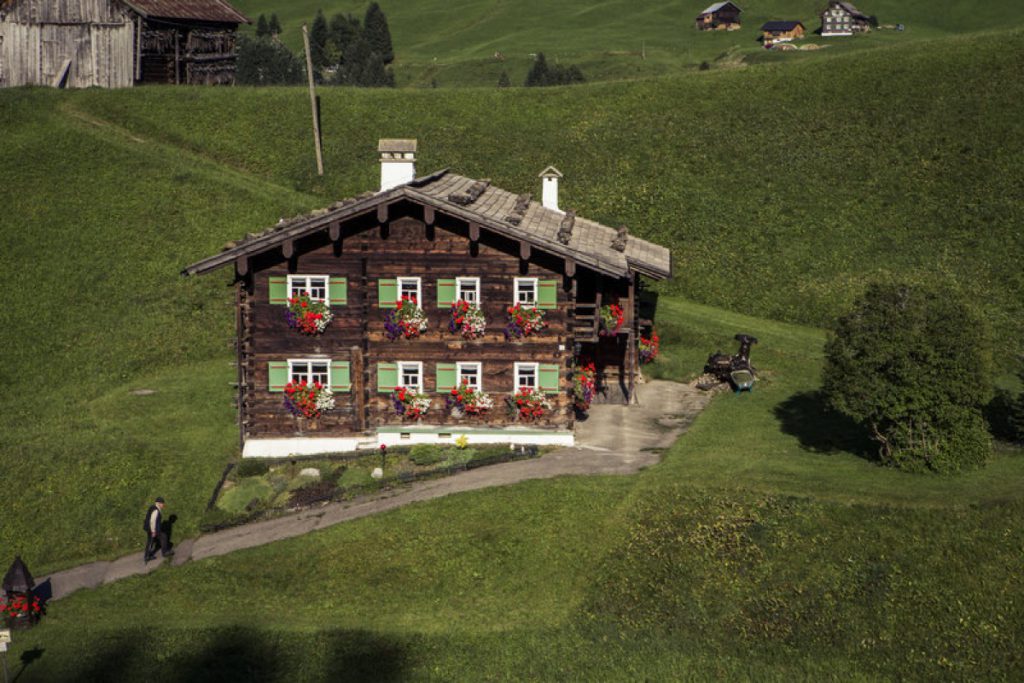
Stopover at the e-mobile Biohotel Eggensberger
In order to avoid the Munich rush-hour traffic and to be able to make full use of the day of arrival, I started together with my friend Johannes Poschner, who was responsible for the photography on our trip, already in the early morning for our enjoyment and testing tour with the Opel Mokka-e. With a full “tank”, because – oh wonder – the public charger nearby was not blocked by parked plug-in hybrids during the night…
In order to recharge man and machine before entering Kleinwalsertal, we allowed ourselves a short stopover in Allgäu at the Eggensberger Biohotel in Hopfen am See. Short because this e-mobile destination not only has 14 charging points – supplied with self-produced solar power – but can also offer its guests a fast charger. So we plugged in the cable, enjoyed an organic coffee on the balcony and the magnificent view of the nearby Hopfensee lake and the mountain panorama, and off we went.
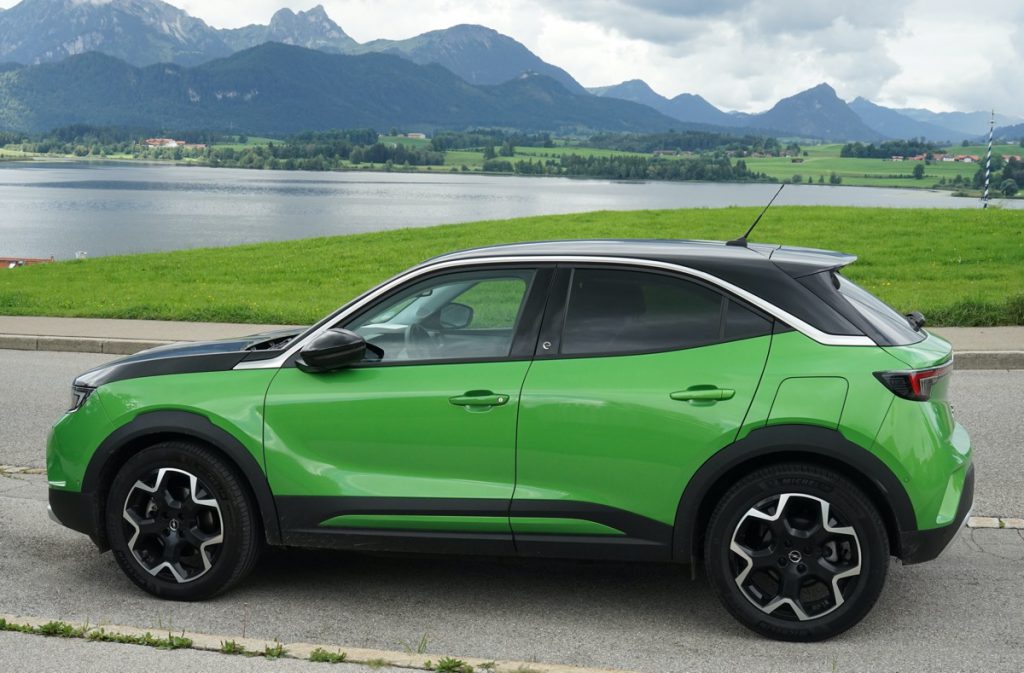
Even though we will soon be publishing a separate article in Touremo magazine about this exceptional hotel and its dedicated boss Andreas Eggensberger, here is a brief preview: For the hotelier, e-mobility is a logical and self-evident element of his comprehensive sustainability claim. And thanks to an attractive rental offer, guests can experience it directly. But the employees also benefit from the e-mobility enthusiasm of their boss. Andreas Eggensberger provides e-cars for those who live farther away, and e-scooters or e-bikes for others who live closer to home.
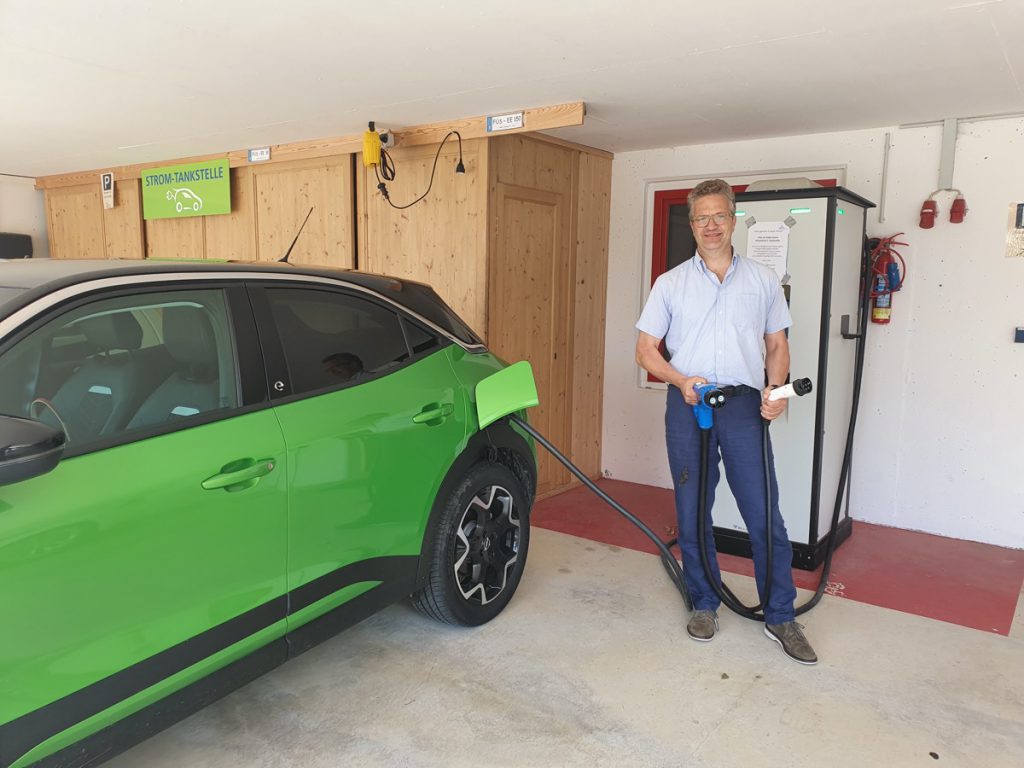
Very committed: The Kleinwalsertal Tourist Office
Soon we reached our first stop in the Klein Walsertal, the tourism centre in Hirschegg. There we had an appointment with the press officer Britta Maier. As we still had some time before our appointment, we were able to find out about some of the special features of the region in the information area of the spacious foyer. Johannes, who is well versed in geology, was particularly taken with the great variety of rocks and their stratification. As an environmental educator in my first profession, I was more impressed by the way they were communicated by means of a real installation. Admittedly, I have little idea about the actual object, the “dead rocks”. But who is at home with all nature topics?
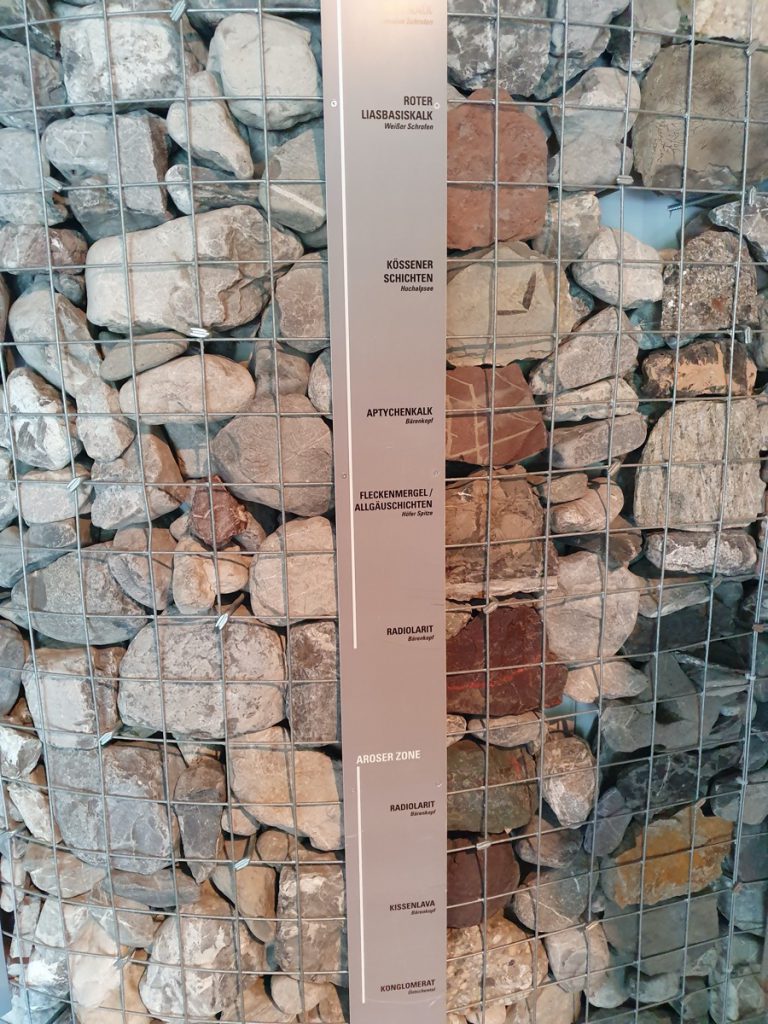
Mrs. Maier could have made things easier by providing us with brochures and some basic information. Instead, she thankfully took a lot of time to give us a detailed presentation of the special features and attractions of the Kleinwalsertal. For this and also for her dedicated provision of information in the run-up to the trip, we would like to thank Mrs. Maier expressly and very sincerely!
Exemplary mission statement “Experience nature consciously
The alpine landscape of the valley is an ecologically valuable habitat for many animal and plant species, but also an important economic and recreational area for people. In order to preserve this and to further develop it in the sense of nature compatibility and sustainability, a joint project of more than 200 stakeholders was launched in 2018 with the aim of bringing nature, economy and tourism into harmony. The motto “Experience nature consciously” is therefore not just a marketing-led slogan, but stands for an exemplary citizen participation concept. Conflicts of use were identified in detailed expert discussions and concrete proposals for solutions were developed. The result was a high level of identification of the population with the measures taken.
Active holiday with sensory experiences
As far as tourism is concerned, the claim derived from the mission statement means that one does not limit oneself to offering tourists a beautiful landscape and directing streams of visitors. Behind this is a modern environmental education concept in many facets. In a later article, we will go into more detail about the individual offers. Here are just a few keywords: volunteer activities for landscape conservation with locals and tourists, nature excursions e.g. “Experience Hydropower”, nature trails e.g. about alpine flowers, nature diversity weeks e.g. on the topic of butterflies or wilderness days for children.
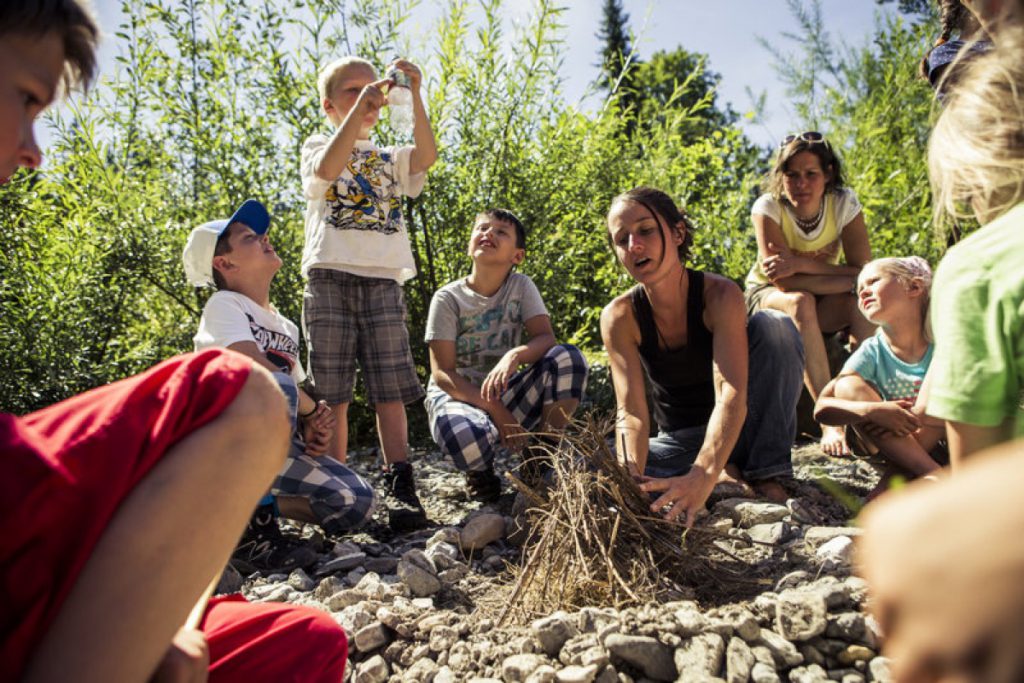
Many offers are aimed at families who, at the end of their holiday, often find themselves emotionally touched and always a little more informed about nature and the need to preserve it.
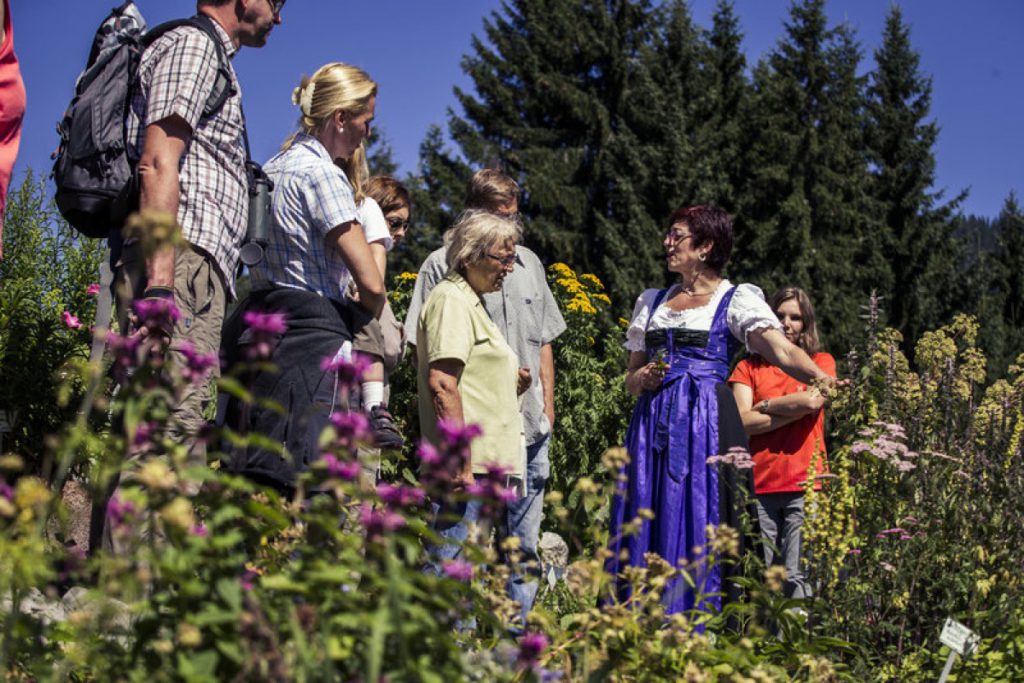
Well, I’ll be: Cows with horns!
Ms Maier gave us a brochure entitled “In the Cycle of Nature” about agriculture and direct marketing in the small valley of the Walser. And since original foodstuffs, their artisanal production and regional specialities are among the core topics of our magazine, we wanted to check in at our accommodation, the “Genuss- und Aktivhotel Sonnenburg”, and immediately visit a farm with cattle husbandry. But even before we had to tackle the difficult task of choosing from 39 farms, chance came to our rescue. Directly on the main road of the valley, we discovered the “Ferienhof Stephanie” in Riezlern, including an organic farm, its own small dairy and farm shop. As I am particularly interested in the preservation of old and endangered breeds of farm animals as well as typical regional fruit and vegetable varieties, the first thing I asked Bernhard Fritz, the owner of the farm, was what kind of animals he kept. In the quiet hope that he would keep the “Allgäuer Braunvieh” breed, originally native to the valley and now extremely rare. Not to be confused with the brown cattle re-imported from North America, the high-performance breed “Brown Swiss”. To my great delight, my secret expectation was confirmed.
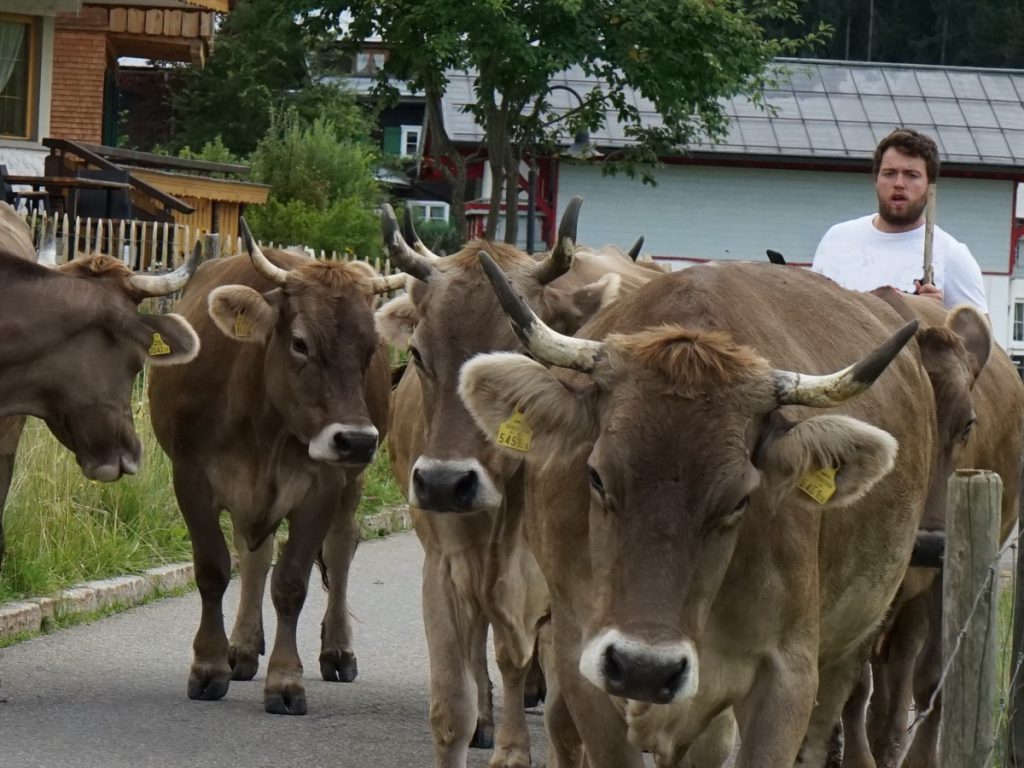
Even better, Mr Fritz fetched the group of cattle from the nearby pasture half an hour later, so that we also got the appropriate photo motifs. Before that, however, he lured a troop consisting of Gems-coloured mountain goats and – sensationally(!) – Tauernscheck goats into the stable. A few years ago, this beautiful breed was only kept on one farm in the Rauris Valley and was on the verge of extinction. It is great that more enthusiasts are now deciding to keep these beautiful rarities again. And we consumers can contribute to the preservation of a living cultural asset true to the motto “save by eating” – in this case the delicious cheese.
Note: We will soon be publishing a separate article on the subject of cattle with horns, which now only make up about 10 percent of the German cattle population.
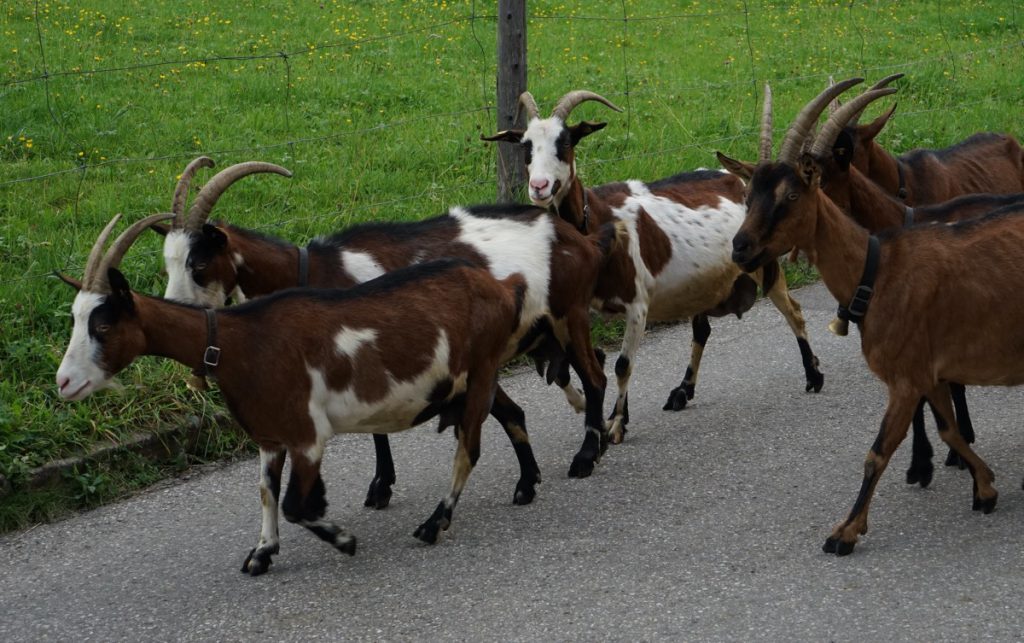
Harvesting without sowing
After the delicious dinner at the Hotel Sonnenburg, a real human original, whom we had already heard a lot about before our trip, announced himself for a talk. Herbert Edlinger describes himself as someone who likes to share his love of nature and respect for everything that grows, blossoms and thrives around him with like-minded and interested people. As a chef in good houses, he first practised what he has always enjoyed most: Cooking imaginatively and arranging dishes that enabled the connection to the processing of products from nature and local herbs. Today, he organises excursions and thematic walks with like-minded, expert friends, for example to locations of wild plants that are used in the kitchen.
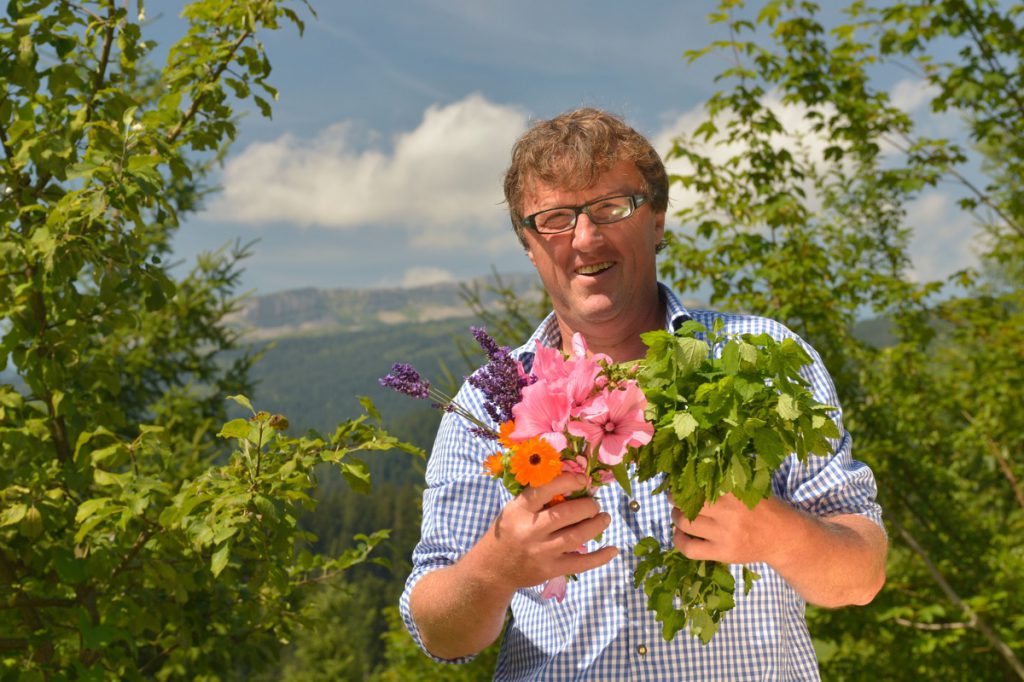
Mr Edlinger tells us that he also benefits from his mother’s wealth of experience. And he talks about his online shop “Einfach gut” (Simply Good), through which he sells everything from elderflower syrup to herb and porcini salt, rowan berry jelly with apples to his best-seller, strawberry woodruff jam, which nature provides him with in the region. Everything is collected, processed and marketed by himself. We would have wanted to listen to him for a long time, but his time is limited, he still has to look after his bee colonies. And we will now make sure we get a good night’s sleep, as we have another tight programme ahead of us tomorrow.
www.kleinwalsertal.com/experience-nature-consciously
Text: Peter Grett
Pictures:
Lead story: “Kleinwalsertal Tourismus eGen | www.kleinwalsertal.com“, Steffen Berschin
Picture 1 House, picture 5 Children, picture 6 Herb garden: “Kleinwalsertal Tourismus eGen | www.kleinwalsertal.com”, Oliver Farys
Picture 2 Mokka-e, picture 7 and picture 8 animals: Johannes Poschner
Picture 3 Hotelier: Anett Tobies
Picture 4 Stones: Peter Grett
Picture 9 H. Edlinger

